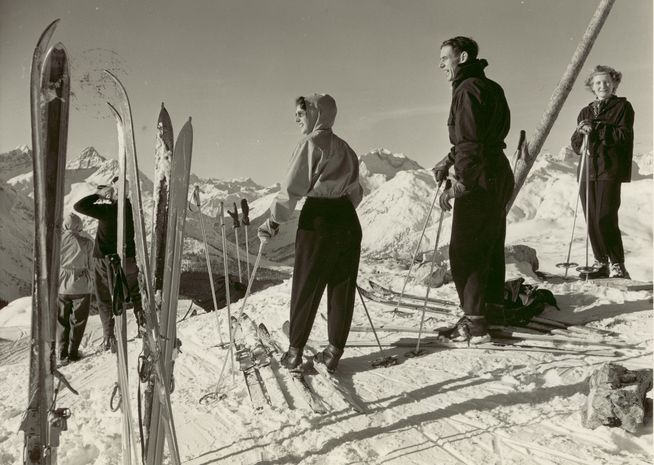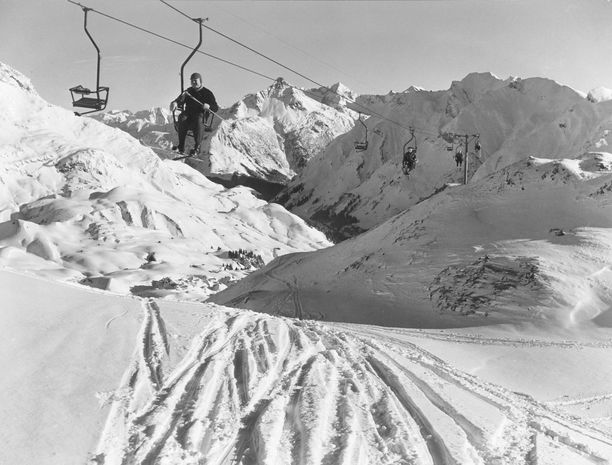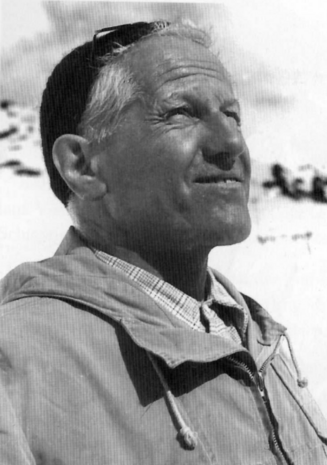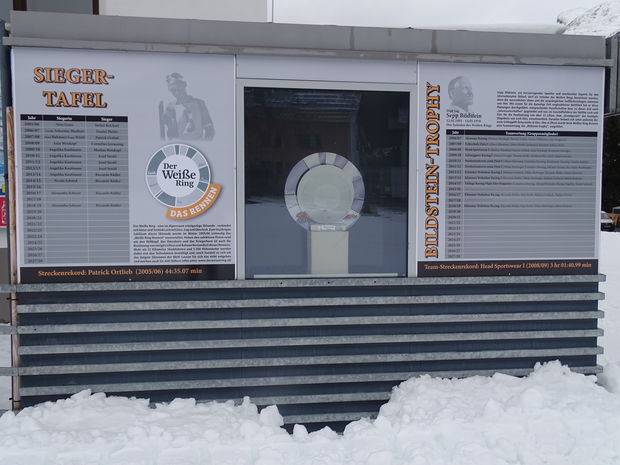
Wild, brave and determined - The pioneers of today's White Ring were daring sportsmen.
First and foremost amongst these pioneers was Sepp Bildstein, without whom the story of Lech Zürs cannot be told. Between sharp-edged rocks, through metres of powder snow, over the roofs of huts and down the steepest slopes, Sepp was ahead of his time and his contemporaries must have known, even back then. As a student of Bregenz ski pioneer Viktor Sohm, he also discovered skiing and the spirit of innovation from an early age.
The vision
Sepp Bildstein, who graduated with a technical degree from the university in Graz, had the foresight to build ski lifts in Lech Zürs. In 1937, he planned and built the first surface lift in Zürs together with Emil Doppelmayr. The construction of the first ski lift here in 1940 was an important milestone in the creation of the White Ring. The lift quickly became very popular and skiers from near and far flocked to Lech Zürs for the chance to ascend the mountain quickly and comfortably. From then on, an extended skiing experience with shorter ascent times was possible.
The single-seater lift from Zürsersee Lake to the Madloch mountain was the next to be built. During the 1956/57 season, the third link, the t-bar from the "Milchloch” area to the Trittalpe mountain hut, went into operation. In 1957, the Der Weiße Ring ("The White Ring") was also enclosed in the direction of Lech-Zürs with the addition of the fourth cable car, the Pendelbahn I to the Rüfikopf. From then on, an extended skiing experience with shorter ascent times was possible. Even back then, the groundwork for the "More time. More space!" slogan was already being laid in Lech Zürs.
The origin of the race
Considering that the Arlberg region has a long tradition of hosting ski races, it may also come as no surprise that the White Ring features many historic race courses. Zürs was the venue for the famous "Zürsersee Giant Slalom" for many years, while the notorious "Madloch Race" is considered a classic in racing history. On the Kriegerhorn mountain, bold racers darted directly down the southern slope to Lech as part of the “Westen Pokal” (Westen Cup) ski race. In the 1990s, the Alpine Ski World Cup took place on the Kriegerhorn and Schlegelkopf mountains.
The legacy
Higher, faster, further: for Sepp Bildstein, this meant skiing faster than all others on the Arlberg, which is why he never shied away from any challenge. But he did more than just dominate ski races; ski jumping was also one of his passions. In addition to setting numerous distance records in Austria, he also became the first Austrian to ever jump from the world’s first ski jump, the Holmenkollen in Oslo. Sepp Bildstein proved to be an innovator at an early stage: After breaking his leg while ski jumping in Graz, the creative minded Bildstein developed the first safety binding, which bore is name and was patented in 1925.
The legacy that Sepp Bildstein left to the Arlberg region is immense: The fact that this tranquil mountain village became a leading international ski resort, the fact that the Arlberg is now one of the largest ski areas in the world, or that the White Ring has achieved international cult status as a ski circuit and as a race, are all thanks to Sepp Bildstein. In his honor, the Bildstein Trophy (team classifications) was created at The White Ring - The Race.
In remembrance
We thank our pioneer Sepp Bildstein for his visionary achievements. Among other things, you will find a honorary plaque at the Schlegelkopf valley station with more information about his courage and innovative spirit. The honorary plaque also lists the winners of the The White Ring - The Race, the course record, as well as the team rankings.







